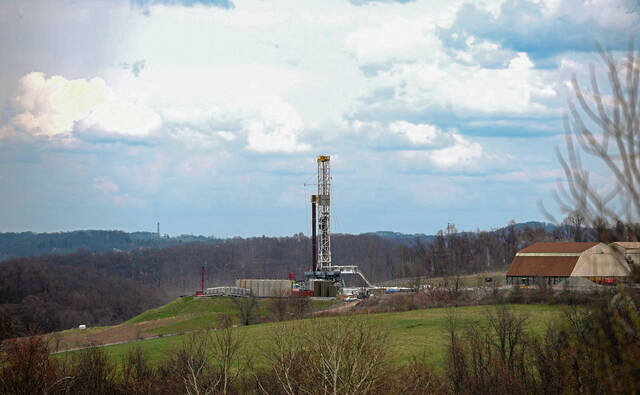Water used for fracking on the rise but remains a small slice of MAWC sales
Water sales for fracking activities throughout Westmoreland and its neighboring counties represent only a small portion of what is distributed daily to local residential, commercial and industrial customers, according to recently released data.
Municipal Authority of Westmoreland County said water purchased by local energy companies accounts for just 4% of the more than 11.5 billion gallons that were sold over the preceding 12 months.
“It’s minuscule in the total amount of water we move,” said MAWC business manager Brian Hohman.
The authority, since its creation in the early 1940s, has sold water to residential, business and industrial customers. In recent years, its customer base has become more heavily reliant on residential users and bulk sales to other municipal water systems even as demand from energy companies has increased due to proliferation of new wells that require fracking techniques to extract natural gas from the ground.
Ted Auch, Midwest program director for FracTracker, a nonprofit agency that monitors fracking activity, said as much as 8% of water sales in Ohio and West Virginia are used in the harvesting of natural gas. Water sales for fracking have replaced other uses that historically have been earmarked for industrial purposes.
“The only number that is going up is fracking. Everything else is going down, and this can impact water quantity and quality. It puts additional stress on the environment,” Auch said.
Meanwhile, Auch said, national trends indicate the costs energy companies pay to buy water for fracking have decreased in recent years. The Municipal Authority of Westmoreland County this year increased its rates assessed to energy companies.
“That’s the opposite of what we’re seeing in Ohio and West Virginia, and that’s the way to approach it,” Auch said.
Most of the water MAWC sells for fracking is supplied from the Beaver Run Reservoir in Washington and Bell townships. The authority, which services nearly 130,000 customers in Westmoreland, Allegheny, Armstrong, Fayette and Indiana counties, operates with three main water supplies and treatment plants located near Beaver Run Reservoir, along the Youghiogheny River near Connellsville and on the Monongahela River in McKeesport.
Water sales generate about $89 million in revenue for the authority.
Today, 66% of the water sold by MAWC is to residential customers. Business customers such as restaurants, car washes and other commercial enterprises account for 17% of water sales, while industrial operators buy just 4% of water sold. Water sold to other local water companies, such as municipal systems in Monroeville, Plum, Belle Vernon and Duquesne, account for 6% of MAWC’s business.
About 3% of the authority’s water sales are for public and private fire protection or for miscellaneous uses.
Tenaska, a natural gas power plant that opened in 2016 in South Huntingdon, purchases more than 1 billion gallons of water annually, according to MAWC. As part of its construction, Tenaska paid the authority $25 million to upgrade its distribution network to service the power plant.
It’s a model MAWC employed decades earlier to pay for construction of Beaver Run Reservoir. The reservoir, which supplies about half of the authority’s customer base, was built with funds paid by Allegheny Ludlum Steel Corp. in the 1950s as part of the company’s deal to purchase water from the newly formed utility.
Allegheny Ludlum’s initial deal with the authority lasted 40 years. The company paid at least $75,000 a year in addition to costs associated with the purchase of up to 13 million gallons a day until its West Leechburg mill was shuttered in 2006.
While the company for decades provided a substantial revenue stream for the authority, today it purchases an average of about 1 million gallons each year, Hohman said.
“We’ve always had a predominately residential customer base,” Hohman said. “Every year, the majority of our revenue comes from 114,000 residential accounts. We don’t rely on businesses that are here today but could be gone tomorrow.”
Still, the authority has plans to increase its potential output. It can produce up to 30 million gallons of water daily from Beaver Run, and work is ongoing to expand the authority treatment plant along the Yough. When completed, that plant will be able to treat up to 50 million gallons a day.
“What we are producing at those plants doesn’t match what we are using. It just positions us to manage any kind of growth,” Hohman said.
That potential for growth is essential in luring new businesses and industries to the region, according to Westmoreland County Planning Director Jason Rigone.
“It is important we have ample water supply to attract and bring in industry,” Rigone said. “We have had projects where water was an important factor.”
Rich Cholodofsky is a TribLive reporter covering Westmoreland County government, politics and courts. He can be reached at rcholodofsky@triblive.com.
Remove the ads from your TribLIVE reading experience but still support the journalists who create the content with TribLIVE Ad-Free.


